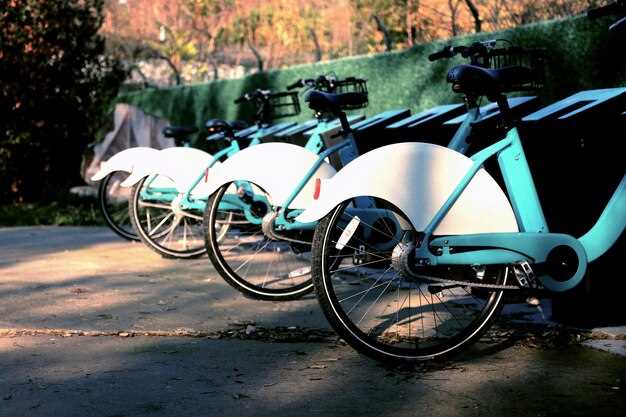
The rise of electric vehicles (EVs) has sparked a significant shift in how we perceive transportation options, especially in the realm of two-wheeled vehicles. Electric bikes and traditional motorcycles represent two distinct categories within this evolving landscape, each boasting unique advantages and disadvantages tailored to different rider preferences and needs.
When evaluating the performance aspects, electric bikes offer instant torque, delivering quick acceleration and a quiet ride that many enthusiasts find appealing. In contrast, traditional motorcycles, powered by gas, deliver a more robust and visceral riding experience, often characterized by the throaty roar of an internal combustion engine. This notable difference in sound, combined with the mechanical feeling of shifting gears, contributes to the allure that traditional motorcycles hold for many riders.
Furthermore, the debate extends beyond just performance. The efficiency and environmental impact of EV technology are becoming increasingly vital considerations for modern consumers. Electric bikes produce zero tailpipe emissions, aligning with the growing emphasis on sustainability in personal transportation. On the other hand, traditional motorcycles offer a broader range of models and styles, often appealing to those seeking that classic riding experience. The choice between these two types ultimately hinges on individual priorities, whether it be sustainability, performance, or the joy of a traditional ride.
Acceleration and Speed: A Side-by-Side Analysis
When comparing electric bikes (EVs) and traditional gas motorcycles, acceleration and top speed are critical factors that often influence a rider’s choice. Electric bikes typically have superior acceleration due to their instant torque delivery. Unlike gas engines, which require time to build power, EVs achieve maximum torque from a standstill. This feature allows many electric models to accelerate rapidly, often outpacing their gasoline counterparts in initial speed bursts.
Gas motorcycles, however, can excel in top speed over longer distances. While electric bikes often achieve impressive acceleration, their speed may be limited by battery constraints and motor ratings. Some high-performance gas models are engineered for sustained high speeds that electric bikes struggle to maintain due to their battery life considerations.
In terms of numbers, many electric bikes can reach 60 mph in under four seconds, showcasing their acceleration capabilities. Conversely, traditional gas motorcycles, depending on the model, often take longer to reach similar speeds but can sustain high velocities with less range anxiety. Riders looking for continuous high-speed performance may lean towards gas motorcycles for their ability to go longer distances without stopping for recharge.
Ultimately, the choice between an electric bike and a gas motorcycle will hinge on the rider’s priorities. If immediate acceleration and eco-friendliness are paramount, electric bikes are a solid option. For those who prioritize extended range and sustained high-speed riding, traditional motorcycles may still hold the advantage.
Cost of Ownership: Maintenance and Charging vs Fuel and Repairs

When evaluating the cost of ownership between electric bikes (EVs) and traditional motorcycles fueled by gasoline (gas), specific factors come into play, particularly regarding maintenance, charging, repairs, and fuel expenses.
Electric bikes generally incur lower maintenance costs compared to gas-powered motorcycles. EVs have fewer moving parts, which reduces the need for regular servicing. Components such as oil filters, spark plugs, and exhaust systems found in gas motorcycles are absent in electric bikes, leading to less frequent replacements and servicing. Additionally, the durability of electric bike components often requires minimal upkeep, which translates to lower long-term costs.
Charging an electric bike is significantly cheaper than fueling a gas motorcycle. The cost of electricity for charging varies by location, but it is generally more economical than gasoline prices, especially as fossil fuel prices fluctuate. An electric bike can be recharged overnight at home, often at a fraction of the cost it would take to fill up a gas tank.
However, electric bike owners should consider the initial cost of the battery, which may need replacement after several years of use. This can be a significant expense, although the total cost over time is usually still lower than the costs associated with gasoline and maintenance for traditional motorcycles.
For gas motorcycles, the performance aspect cannot be overlooked. While electric bikes have improved dramatically in performance, gas motorcycles still excel in terms of range and refueling time. Gas motorcycles typically allow longer rides without the need for a lengthy charging break. However, these benefits come with higher fuel costs and regular maintenance expenses resulting from wear and tear on mechanical components.
In summary, while electric bikes offer appealing cost advantages in terms of maintenance and charging, traditional gas motorcycles maintain certain performance benefits. The total cost of ownership will ultimately depend on individual riding habits, maintenance preferences, and the importance of performance versus operating costs. Evaluating these factors will help potential buyers make informed decisions aligned with their riding lifestyle.
Environmental Impact: Emissions and Sustainability Considerations

When comparing electric bikes (e-bikes) and traditional motorcycles, one of the most significant factors to consider is their environmental impact, particularly in terms of emissions and sustainability. Traditional motorcycles typically run on gasoline, which contributes to greenhouse gas emissions and air pollution. The combustion of gas in internal combustion engines releases carbon dioxide (CO2), nitrogen oxides (NOx), and particulate matter, all of which have detrimental effects on both human health and the environment.
In contrast, e-bikes operate using electricity and produce zero tailpipe emissions. When assessing their overall environmental footprint, it’s essential to consider the source of electricity used to charge these electric vehicles (EVs). If the power comes from renewable sources such as solar or wind, the sustainability of e-bikes is significantly enhanced. However, if the electricity is derived from fossil fuels, some emissions can still be attributed to their operation.
In terms of resource use, the manufacturing of traditional motorcycles involves the extraction and processing of metals and plastics, which also have ecological consequences. E-bikes, while also requiring materials for batteries and construction, typically utilize fewer resources overall due to their smaller size and lower power requirements. Moreover, advancements in battery technology are leading to more sustainable methods of production and recycling, further mitigating environmental impact.
Ultimately, while both options have their environmental challenges, e-bikes present a more sustainable alternative when considering emissions, resource usage, and potential for renewable energy integration. Transitioning from gas-powered motorcycles to electric bikes can significantly reduce an individual’s carbon footprint and contribute positively to environmental sustainability.
